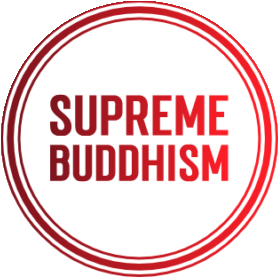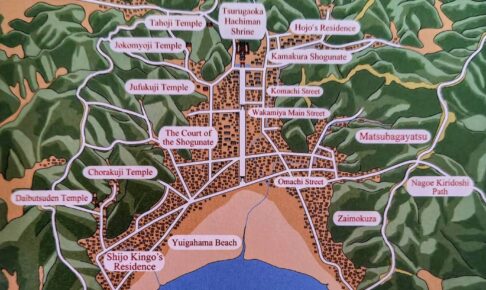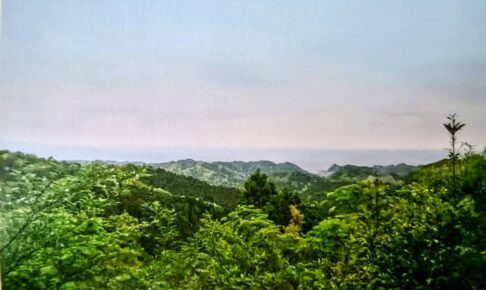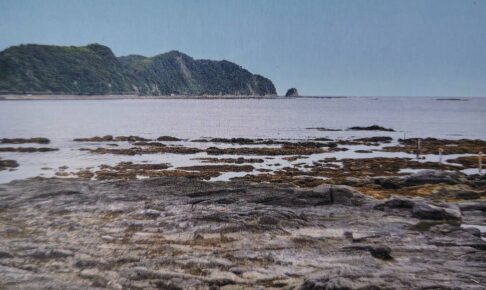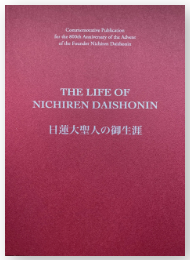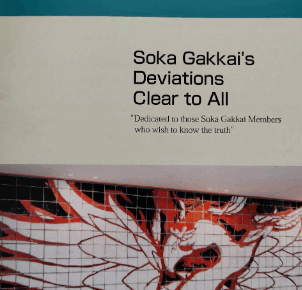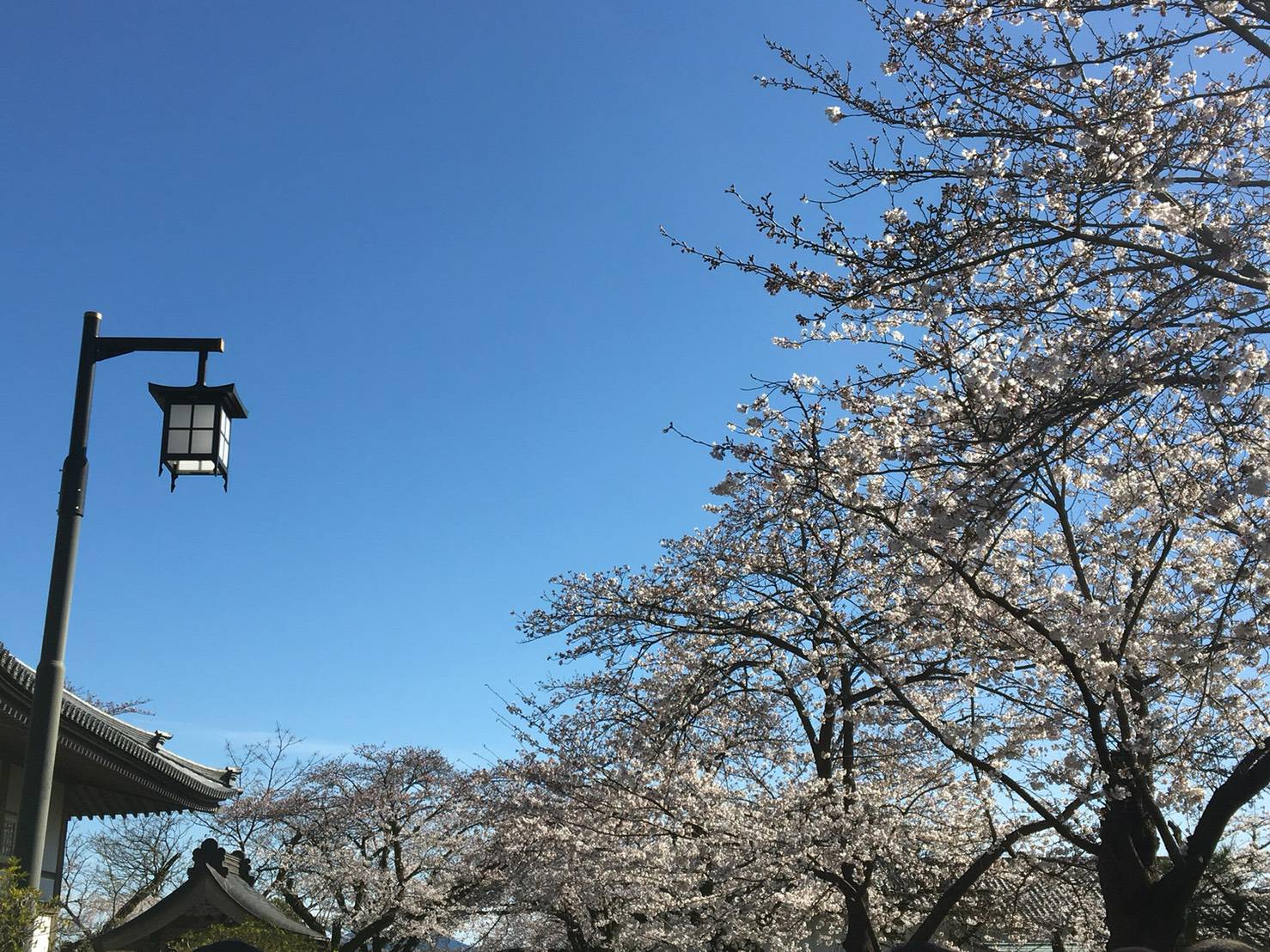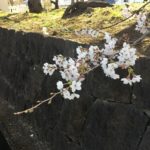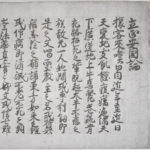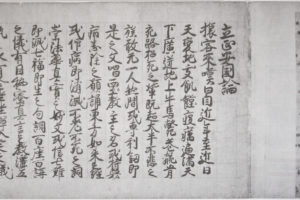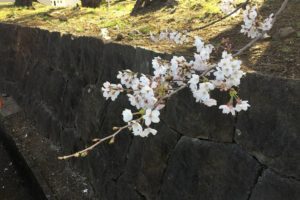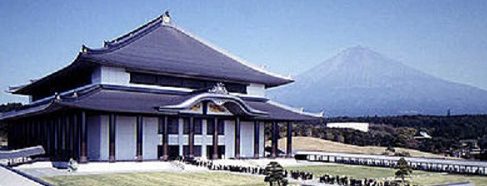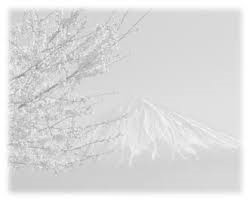The Treatise on Securing the Peace of the Land through the Propagation of True Buddhism
The “Rissho Ankoku Ron” was written by our founder, Nichiren Daishonin, in Kamakura in the first year of Bunno (1260) .It was seven years later since the Daishonin declared the founding of True Buddhism in 1253. The “Rissho Ankoku Ron” is written in the form of questions and answers, consisting of ten questions and nine answers.
Various calamities, misfortunes and abnormal weather ravaged the land of Japan during the Daishonin’s time.The enormous earthquake occurred in the first year of Shoka (1257), which later gave the Daishonin an opportunity to write the treatise of “Rissho Ankoku Ron,” was so devastating that it destroyed every single temple and shrine throughout Kamakura.Various disasters came on the land and the people were afflicted with such suffering.
The Kamakura government called out to Shinto and the different sects of Buddhism ordering them to offer various prayers to exterminate the rampant natural disasters. These, however, failed to produce the slightest effect.On The contrary, they worsen the situation.
Due to such continuous disasters people died from famine and illnesses one after another.The rumor says that the number of death reached the half of the population in Japan at that time.The Daishonin pored over the root cause As a result, he drew a conclusion that occurrence of various disasters is caused by the prevalence of the heretical teachings throughout the land and the slandering of the True Law.The Daishonin had an insight that of these misfortunes out of his deep compassion and wisdom. if the nation overlooked this causal relationship and pursued the false doctrines any further, not only the calamities throughout the entire land would swell but the inner strife among the fellow citizens would occur and the nation would suffer from the foreign invasion without fail.Out of deep compassion to save all mankind the Daishonin remonstrated to the government officials as well as the ordinary people that they should discard the incorrect teachings and take faith in True Buddhism to put an end to the misfortunes.And, he submitted the “Rissho Ankoku Ron,” a treatise of exterminating calamities and savin mankind, to Hojo Tokiyori also known as Saimyoji Nyudo, the retired regent but still the most influential political leader in the Kamakura Shogunate in the first year of Bunno (1260).
Now, the title, “Rissho Ankoku Ron , “means to establish the true teaching and secure the peace of the land.” Rissho “means to establish the correct doctrine of the Essential Teaching of the Lotus Sutra. Nichikan Shonin, the twenty sixth High Priest, explains the two Chinese characters used for “rissho” in his “Notes on Rissho Ankoku Ron” as follows. “The both characters of rissho encompass the three secret laws.” In other words, the two characters of “rissho” contain the meaning of the Three Great Secret Laws, additionally, the High Priest Nichikan Shonin teaches as follows.
“If we follow the teachings of the object of worship of the Essential Teaching,” shou “means mystic and mystic is” shou. “Mystic means Nam-Myoho-Renge-Kyo. Myoho- Renge-Kyo is in other words the object of worship of the Essential Teaching. “Ritsu” of “rissho” means to uphold this object of worship. “
As to the relationship between “rissho” and the Daimoku of the Essential Teaching, Nichikan Shonin comments in his “Notes on Rissho Ankoku Ron” as follows.
“If we act on the teachings of the Daimoku of the Essential Teaching, the Daimoku has two meanings of faith and practice.The practice starts with faith and faith ends with practice.Because one encounters the true object of worship, his faith is the correct one. Because his faith is correct, his practice is also correct.Thus, the practice of the Daimoku is correct. “Ritsu” means to maintain the practice.”
Moreover, the relationship between “rissho” and the High Sanctuary of the Essential Teaching is stated in Nichikan Shonin’s “Notes on Rissho Ankoku Ron” as follows.
“If we follow the teachings of the High Sanctuary of the Essential Teaching, “shou” means the supreme single vehicle which is the origin of all the teachings in Buddhism.The supreme single vehicle means the object of worship of the Essential Teaching.This is because the object of worship is the supreme one in the entire universe. “Todomaru” means to dwell eternally. The object of worship resides eternally with the High Sanctuary of the Essential Teaching. “Ritsu” means to establish the High Sanctuary.
As described, the two characters of ” rissho” contain the meanings of the Three Secret Laws-the Object of Worship of the Essential Teaching, the Daimoku of the Essential Teaching, and the High Sanctuary of the Essential Teaching.To establish the doctrine of the Three Great Secret Laws we must weed out all of the erroneous religions first.With refuting the heretical teachings, there can be no prevalence of True Buddhism (rissho) nor realization of a peaceful land.
The teaching of the Lotus Sutra itself is the teaching of refuting the heretical teachings.The Great Teacher T’ien-t’ai explains this in his Hokke Gengi as follows.
“The practice of the Lotus Sutra is shakubuku, the refutation of the provisional doctrines.”
As Great Teacher T’ien-t’ai states, the teaching of the Lotus Sutra is the teaching of shakubuku. In the “Rissho Ankoku Ron” the Daishonin almost exclusively refutes the doctrines of Nembutsu sect taught in Honen s Senchaku Shu (The Sole Selection of the Nembutsu Teachings).
However, this is merely the surface meaning and the true meaning is to refute all the heretical teachings.Thus, the Daishonin condemned all of the incorrect sects known as four dictums-by denouncing the four leading sects of the time, Nembutsu, Zen, Shingon and Ritsu since his establishment of True Buddhism in the fifth year of Kencho (1253) .
At the time the Daishonin lived in a small dwelling in Matsubagayatsu and was preaching the people on a crossroad of Kamakura primarily to converting individuals.The people spoke ill of the Daishonin while preaching four dictums by lifting up his voice, Sometimes, people threw roof tiles and stones at him.The people were enraged by the Daishonin’s teaching which refuted the various schools by denouncing these doctrines are the root cause of incessant hell and with which one can never attain Buddhahood.When, when the Daishonin admonished the government through the submission of the “Rissho Ankoku Ron”, his cottage in Matsubayagatsu Was burned the next month.In the following year the Daishonin was exiled to Izu. As stated, the life of the Daishonin was a continuous confrontation of persecutions and oppression.However, this did not stop him firm propagating True Buddhism.This is solely due to his great compassion and firm conviction that the only way to save all mankind in the Latter Day of the Law is to completely stop people from embracing the false doctrines. We, the disciples of the Daishonin, should follow his spirit and strive to practice shakubuku .Here in lies the true significance of “rissho.
” Next, “Ankoku” means a peaceful land. In other words, it is to build a secure world. Here, we would like to pay attention to the Chinese character used for “koku “(land) in the title,” Rissho Ankoku Ron. “Throughout the treatise “koku” (land) is used 71 times While the Daishonin was alive, the old Chinese character, consisting of the square shape strokes meaning borderlines of a country and a character for arms inside of it, was used for the word “koku “(land). The whole character means to protect the land and the nation with arms.However, the peace obtained using arms cannot last forever. Therefore, the Daishonin used the old character for” koku “(land) only four times throughout the document. Then, another character for “koku” (land) consisting of the square strokes and the character for king inside of it is used eleven times in the treatise. And finally, the third character of for “koku” (land) consisting of square strokes and the character for people inside of it is used fifty six times.This signifies that the king and the arms are not the center of the country.With people the country does not exist and the people who have faith in True Buddhism protect the country.If all mankind take faith in the Dai-Gohonzon of the High Sanctuary of the Essential Teaching, we can establish the truly peaceful land with the protection from the various buddhas.As the Daishonin teaches in the following passage a slightest doubt about establishing a peaceful Buddha land in this world , if all people in the entire world take faith in the Gohonzon of the Three Great Secret Laws and chant Nam- Myoho-Renge-Kyo.
“The time will come when all people, including those of Learning, Realization and Bodhisattva, will enter on the path to Buddhahood, and the Mystic Law alone will flourish throughout the land. In that time because all people chant Nam- Myoho-Renge-Kyo together, the wind will not beleaguer the branches or boughs, nor will the rain fall hard enough to break a clod. The world will become as it was in the ages of Fu Hsi and Shen Nung in ancient China.Disasters will be driven from The land, and the people will be rid of misfortune.The will also learn the art of living long, fulfilling lives.Realize that the time will come when the truth will be revealed that both the Person and the Law are unaging and eternal.There cannot be the slightest doubt about the sutra’s solemn promise of a peaceful life in this world. “(Gosho p.671, MW vol. 1 p.102)
Lastly, I would like to talk about the Chinese character for” ron “in” Rissho Ankoku Ron. “The High Priest Nichikan Shonin teaches in his” Notes on Rissho Ankoku Ron “as follows.
“The Shakyamuni Buddha’s teachings are named as sutras. The words of the bodhisattvas are called ron (treatise). The True Cause is the bodhisattva of the Essential Teaching. Why the treatise is called ron? Because the inner realization of the secret Law was revealed by the great bodhisattva of the True Cause of the sutra, ‘once I also practiced the bodhisattva austerities.
“We call the Buddha’s teachings the sutras and the Bodhisattva’s teaching a treatise. Since the Daishonin is the rebirth of the Bodhisattva of Jogyo, the “Rissho Ankoku Ron” is categorized as a treatise. outstanding, the true identity of the Daishonin is the True o Buddha of the True Cause from the remotest past of kuon ganjo, and at the same time, the bodhisattva of the rank of common mortal.However, the “Rissho Ankoku Ron” was written before the Daishonin’s Sado Exile where he revealed himself as the True Buddha in the Latter Day of the Law and it was written by the Daishonin as a bodhisattva of Jogyo. Thus, the “Rissho Ankoku Ron” is named as a treatise. Still more, the “Rissho Ankoku Ron” takes the form of question and answer dialogue and through the dialogue the Daishonin makes his points.This writing style adds more reason for the “Rissho Ankoiu Ron” to be considered a treatise.
I have talked about the title of the “Rissho Ankoku Ron.” The “Rissho Ankoku Ron” is in other words, a teaching of the True Buddha from the remotest past of kuon ganjo to refute the heretical teachings, propagate the Mystic Law of the Three Great Secret Laws, and build a peaceful land.The spirit of the True Buddha, the Daishonin, has been passed on to future generations only among Nichiren Shoshu denomination.This can be proven through reading the Moshi-jo, the letters of Remonstration of the successive High Priests to the Heads of the Government.Each letter of Remonstration states the heretical teachings should be exterminated, since they disorganized the country while upholding the True doctrines rules over the land.This is the very spirit which has been correctly transmitted within Nichiren Shoshu School for 750 years, The “Rissho Ankoku Ron” ends with the following passage,
“But it is not enough that I alone should accept and have faith in your words — we must see to it that others as well are: warned of their errors! “(Gosho p. 250, MW vol. p.46)
Not only we alone uphold our faith in True Buddhism and attain true happiness, but also we should practice shakubuku for others who follow the heretical teachings. We must not forget the spirit of “Rissho Ankoku Ron.” Aiming towards the 750 “Anniversary, the celebration of the manifestation of the justice of Daishonin in His submission of “Rissho Ankoku Ron,” in six years, let us together make our utmost efforts in the practice of jigyo keta.
